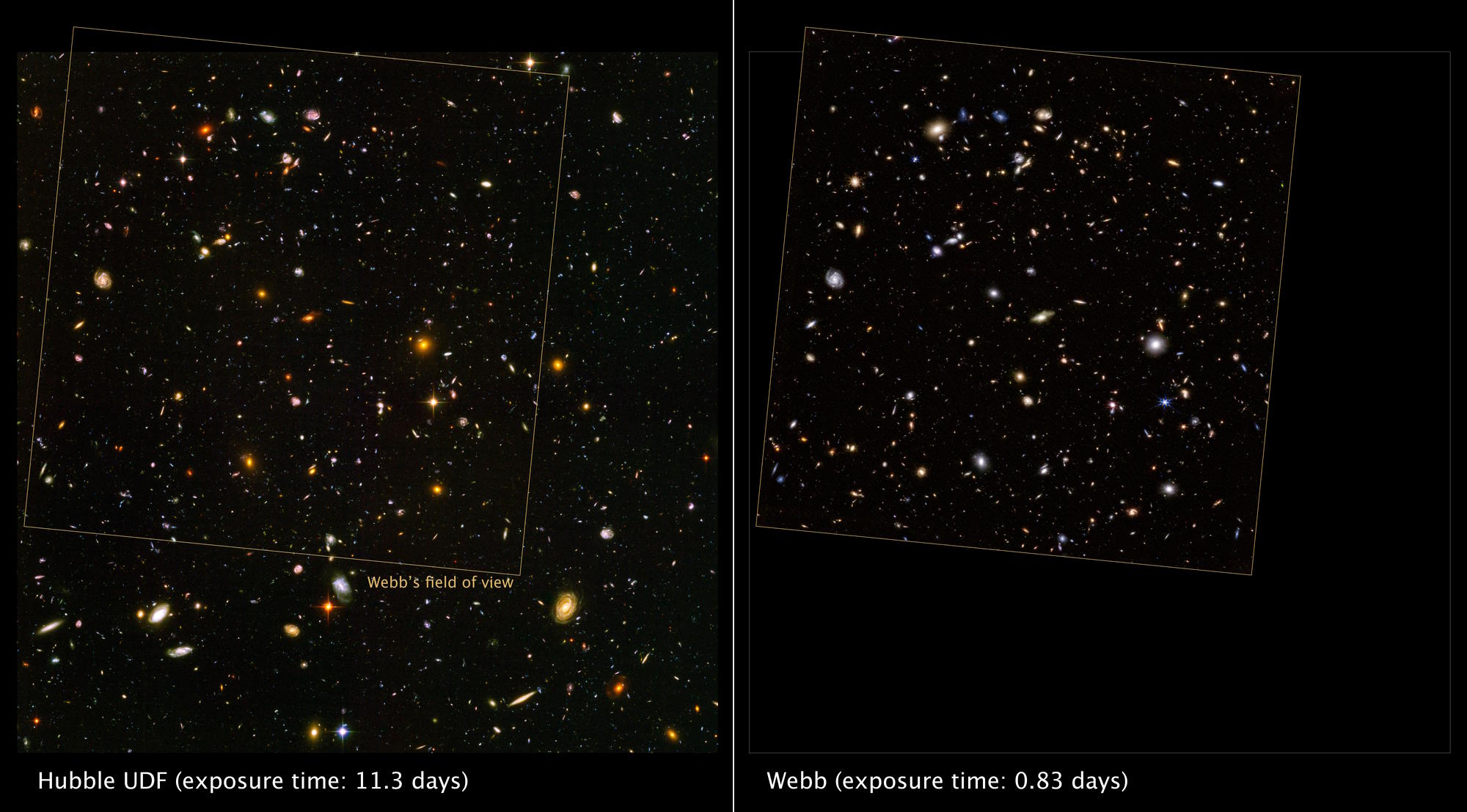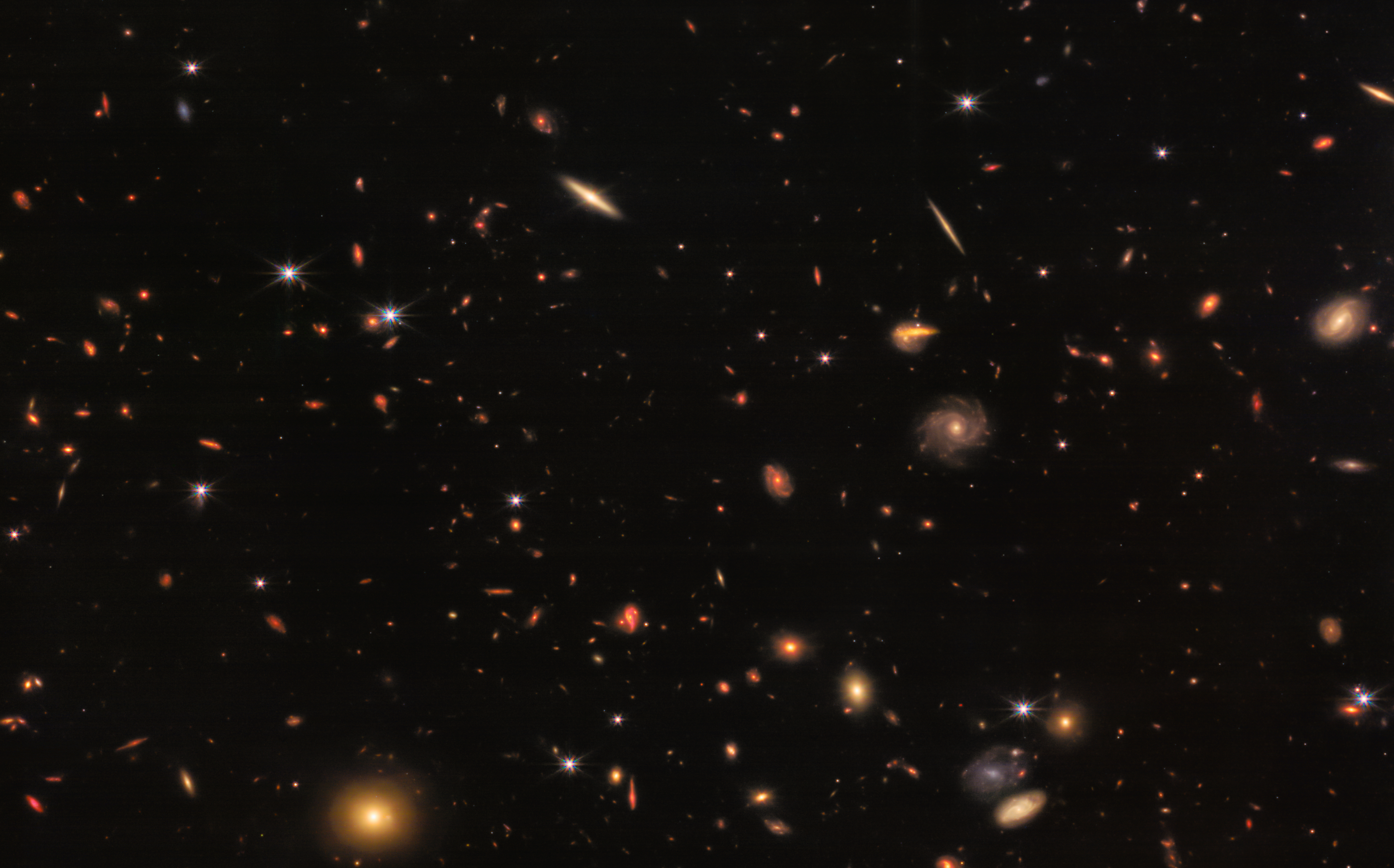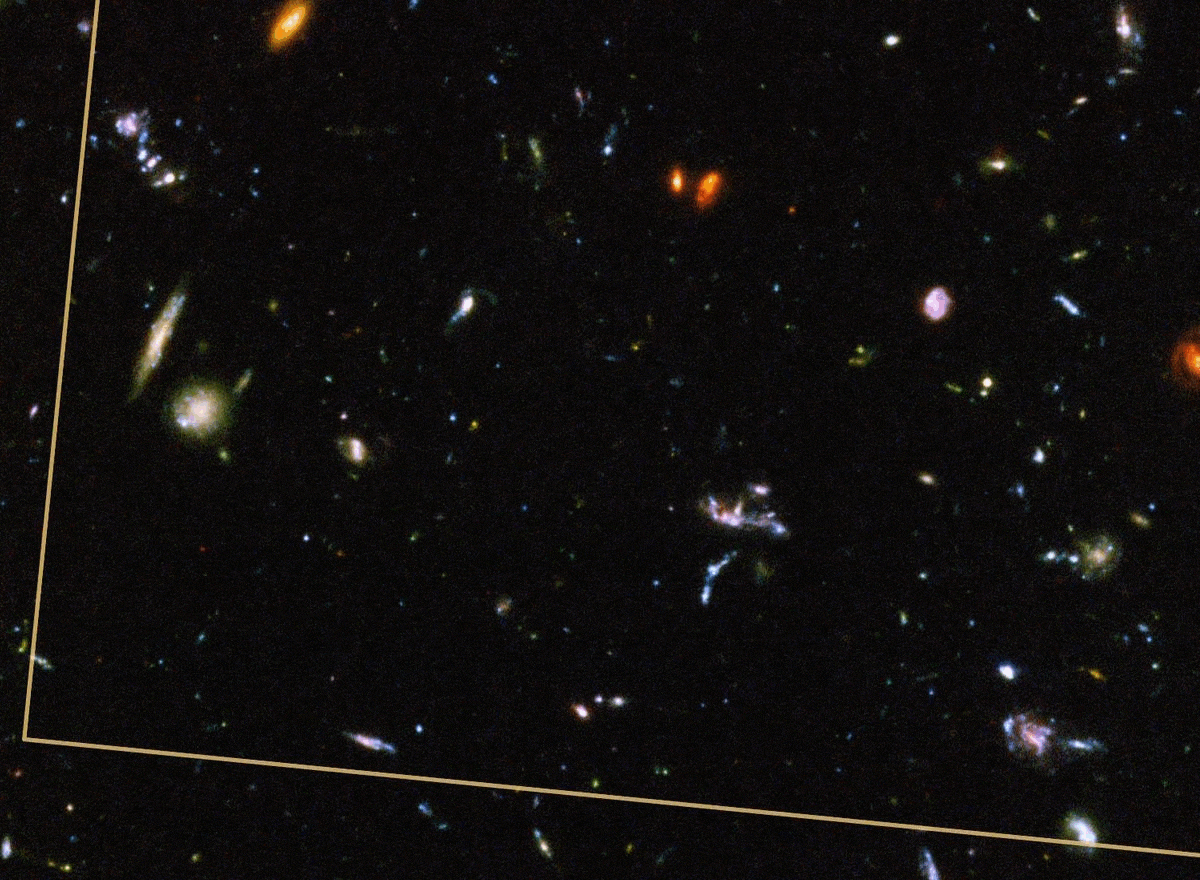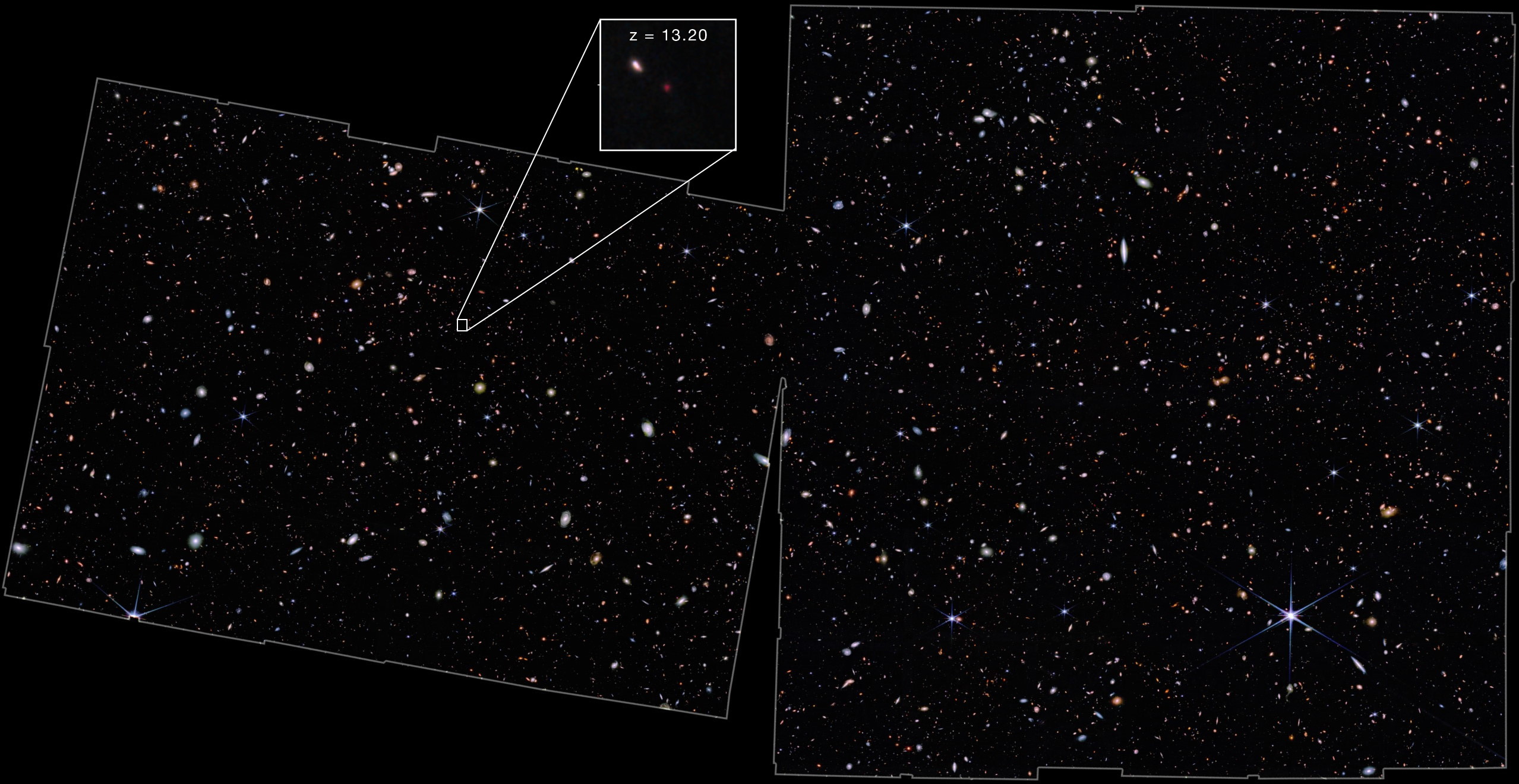Seeking Fomalhaut’s exoplanet, JWST finds so much more
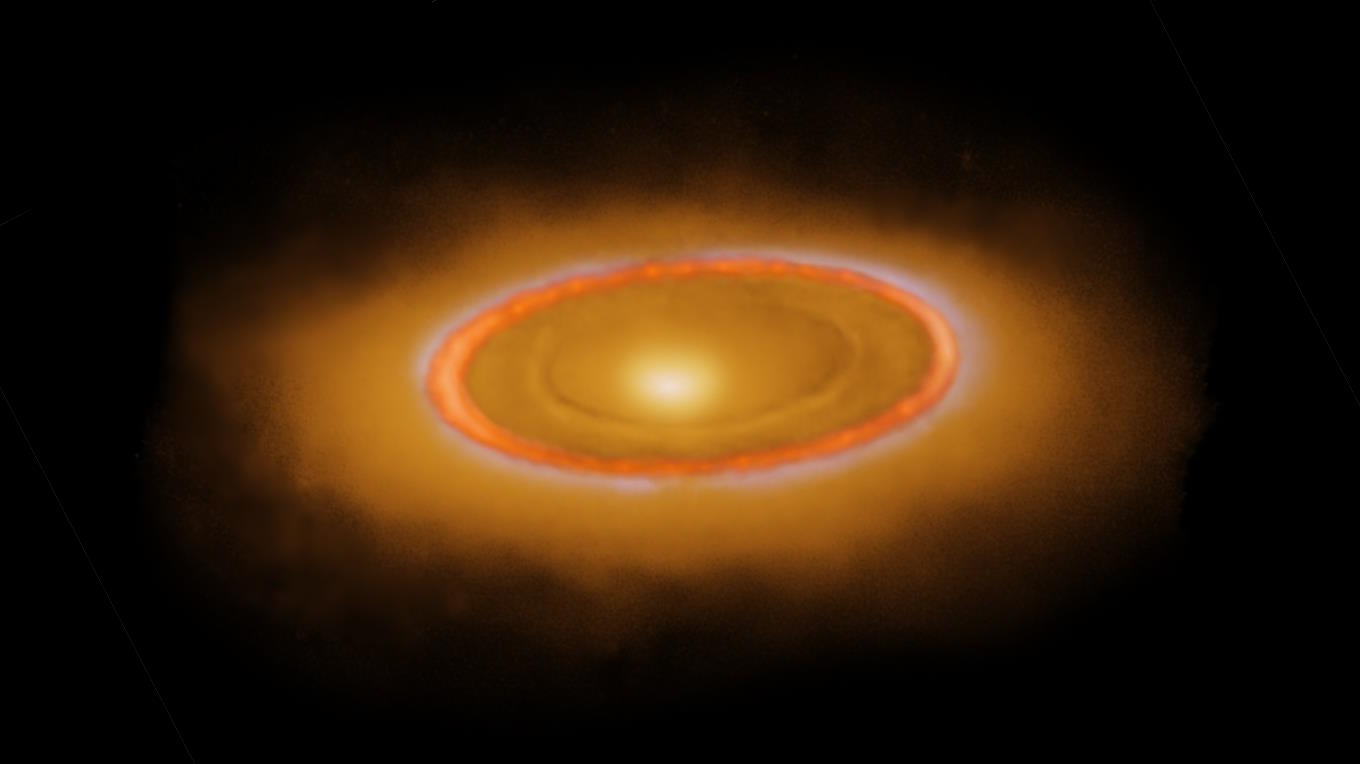
- Fomalhaut is one of the top 20 brightest stars in the night sky and is located just 25 light-years away, making it a rich target for astronomers since ancient times.
- With the advent of the Hubble Space Telescope, it was seen to have a dusty disk surrounding it highlighted by a bright point-like source: a possible exoplanet.
- Now that JWST has imaged it, including with its spectacular mid-infrared (MIRI) instrument, what was revealed is so much richer than anyone had hoped.
Not every star in the night sky is a star like our Sun. Some have planets; others are too poor in heavy elements to create them. About half of the stars are found in singlet systems like our own, but about 50% of the stars in the Universe are bound up in multi-star systems like binaries, trinaries, and even richer systems. Some are faint and low in mass, others are bright and quite heavy, with the heavier ones having bluer colors and shorter lifetimes. And some of them are relatively old like our own Sun is, being several billion years old, but others are young: young enough that there are still protoplanetesimal disks around them.
Of all the stars visible from Earth, the one with the brightest protoplanetesimal disk is the 18th brightest star in the night sky, Fomalhaut, which at one point was directly imaged by Hubble and shown to have not just a ring of material around it, but a candidate for what could be a directly imaged exoplanet: a giant, Jupiter-like world more than five times as far from its parent star as Neptune is from the Sun. In a landmark study, the first study of the Fomalhaut system incorporating James Webb Space Telescope (JWST) data has just been released. The scientific riches are more, and quite different, than what almost anyone had imagined would be there.
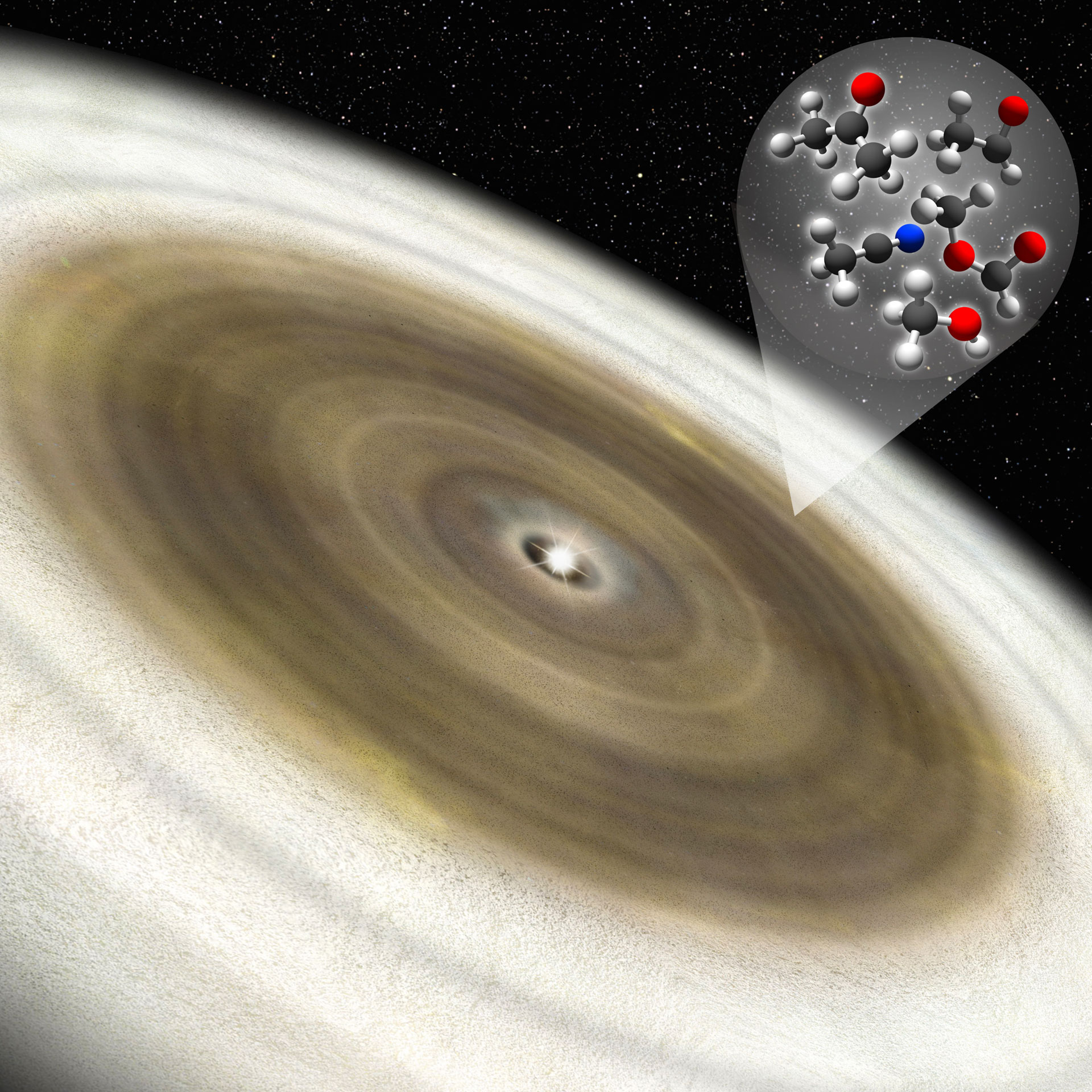
Imagine looking up at the brightest stars in the night sky and realizing, for the first time, that some of them are so young and nearby that they still have protoplanetary material around them that we can detect. That realization first occurred with the advent of infrared astronomy in the second half of the 20th century, with three stars in particular showing that characteristic “excess infrared radiation” that’s so interesting:
- Vega, the 5th brightest star in the night sky, 2.1 times the Sun’s mass and just 25 light-years away,
- Fomalhaut, the 18th brightest star in the night sky, 1.9 times the Sun’s mass and also 25 light-years distant,
- and Epsilon Eridani, “only” around the 400th brightest star, but at just 82% of the Sun’s mass and 10.5 light-years away, it’s the 3rd closest star system visible to the naked eye.
The excess infrared radiation from these systems was quickly realized to come from some sort of dusty debris surrounding these stars, like the analogue of what could lead to either an asteroid belt or a Kuiper belt (or both) in these star systems. Observations suggested that they were only about ~400 million years old apiece, and the goal quickly became twofold: to characterize and measure the heat-emitting dust in those stellar systems, and to search for something that might even be better than dust, like the presence of one or more exoplanets around these systems.
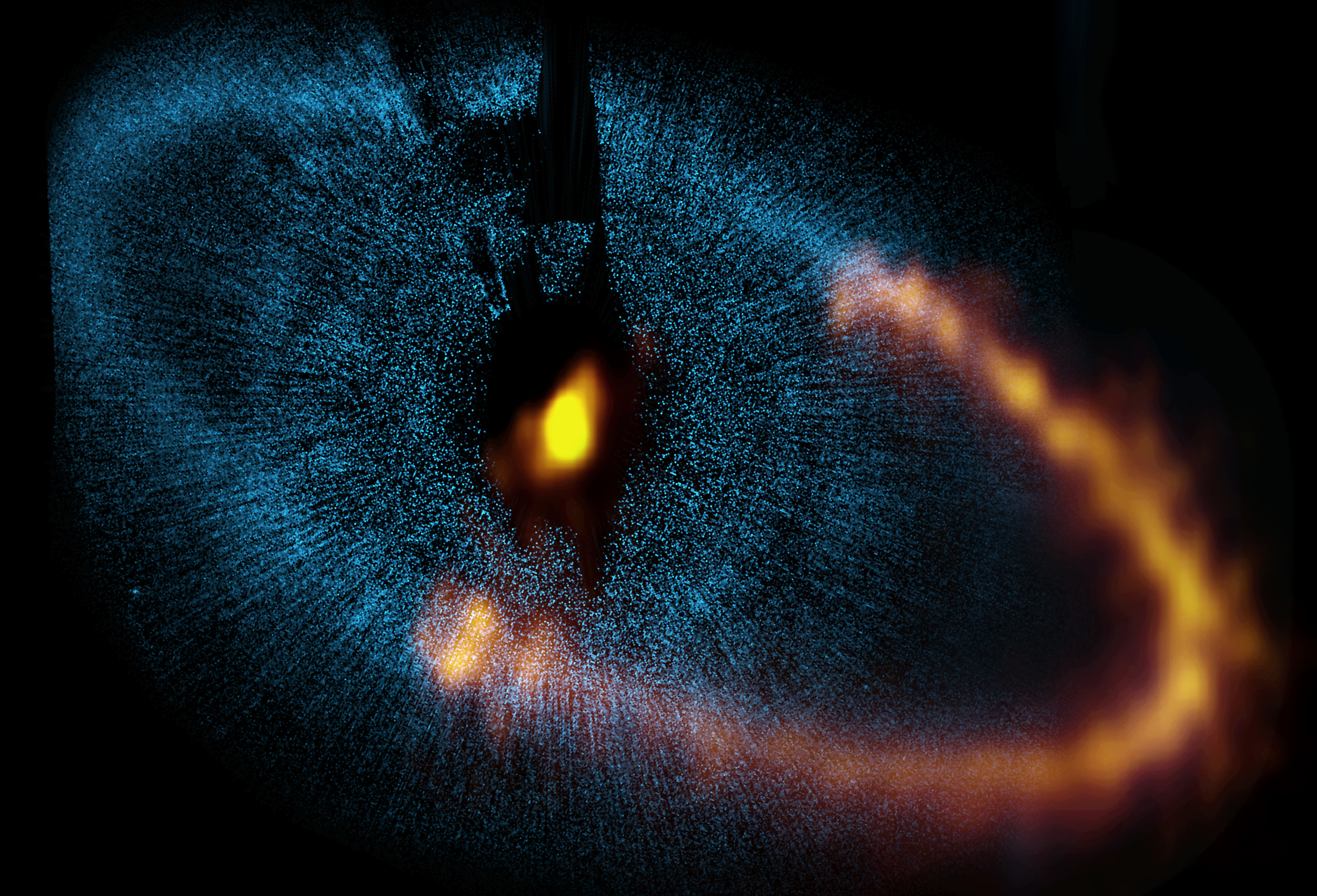
When we turned observatories like the Hubble Space Telescope on Fomalhaut, something spectacular and highly suggestive emerged: a clearly identifiable ring of outer material, with a bright “clump” present just slightly interior to that ring.
In one fell swoop, had astronomers accomplished both goals? Had they discovered both an analogue of our Solar System’s Kuiper belt and, perhaps, a giant planet shepherding it from the interior?
When the observations first came in, that was the great hope. While planets are typically thought to form relatively rapidly around newborn stars — as there’s some very strong evidence that the planets are less than ~100 million years younger than the Sun itself in our own Solar System — it’s certainly within reason that these protoplanetary disks, particularly in the outskirts, could survive for far longer. But as we began to better observe the Fomalhaut system:
- in a different set of wavelengths,
- from the ground as well as from space,
- and over longer periods of time,
it began to become clear that although the dusty Kuiper belt analogue feature was real and persistent, this planetary candidate that we had designated as “Fomalhaut b” wasn’t necessarily a planet at all, as it appeared to grow larger, become fainter, and decrease in temperature over a period of several years.

Sure, other exoplanets did show up around stars that turned out to be verified: by the radial velocity method, by the transit method, and even through direct imaging, such as the planets found around the star HR 8799. But sets of observations of other young systems with protoplanetary disks were even more suggestive than the directly imaged exoplanets found in a few places: in the infrared and at still longer wavelengths, detailed features in these disks began to appear. These included:
- rings,
- gaps in those disks that indicated planets,
- and even direct images of these protoplanets themselves, some of which contain their own circumplanetary disks.
What limited our observations was a combination of resolution, which is linked to the number of wavelengths of light that can fit across a telescope’s diameter (or, for an array of telescopes, the distance between the various individual telescopes within the array) and the distance to the object. Even with these spectacular images of protoplanetary disks and the unprecedented details seen inside of them, we were still limited in a very important way: we could only resolve the outermore features of these disks, not the innermost features, which is where the most “interesting” stuff — like, potentially, Earth-sized and Earth-temperature planets — might be.

That’s one of the key motivations for choosing, as part of the Guaranteed Time Observations Programs awarded to members of the various instrument teams working with the James Webb Space Telescope (JWST), a proposal by MIRI team member András Gáspár to image the protoplanetary disk around the young stellar system of Fomalhaut. At a distance of just 25 light-years, it’s one of the closest systems to Earth that has a disk around it. With a strange, bright object that’s been appearing to fainten, broaden, and cool over time very close to the observed disk, it’s exhibiting some unusual features that deserve follow-up.
But perhaps most interestingly, there was preliminary evidence for something else happening in the Fomalhaut system: a “gap” in the dusty debris, followed by an additional feature that was luminous in the infrared interior to that.
- Could this indicate the presence of additional planets?
- Were we seeing evidence of not just a Kuiper belt analogue, but also an asteroid belt analogue in this system?
- Were we somehow seeing a star system that was ~400+ million years old, but that hasn’t yet finished forming planets, or that somehow was replenishing its protoplanetary material?
As first proposed in 2016 and later observed by the same mid-infrared instrument (MIRI) team scientists with JWST, we would at last have the power to find out.
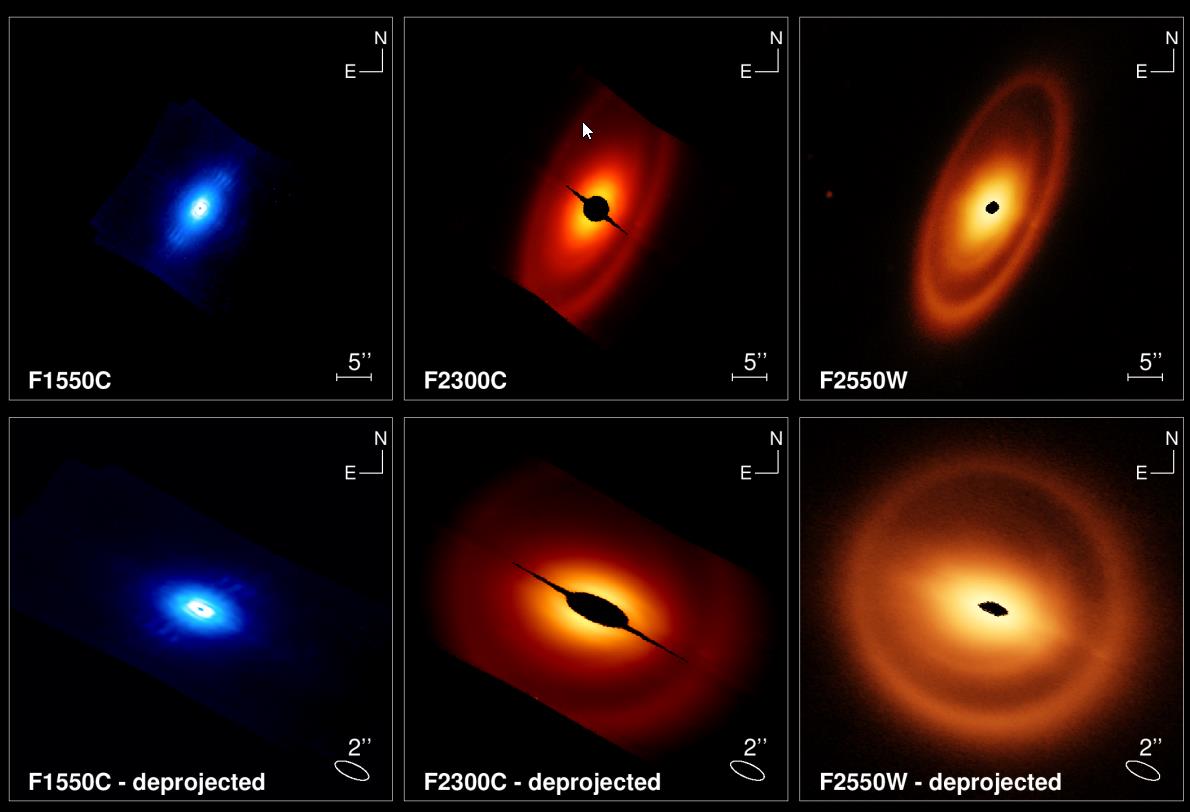
At last, the data has come in and the team of scientists that worked so hard to collect and analyze this data have published their first paper on the Fomalhaut system using this novel information acquired with the unique capabilities of JWST. They not only took data at three different wavelengths:
- at 15.5 microns, which would be most sensitive to the hotter, innermost dust,
- at 23.0 microns, which could be used in conjunction with JWST’s coronagraph, which blocks the light of the main parent star,
- and at 25.5 microns, which is just about the longest set of wavelengths JWST is capable of observing,
but then went on to combine those observations with new ones from ALMA (at radio wavelengths) and from Hubble, using ultraviolet and visible light data.
It was fully expected that this would reveal innermore details than had ever been seen before, and many astronomers were hoping to see an analogue of our own Solar System. Would we see a Kuiper belt-like ring without a feature like Fomalhaut b (assuming it’s decayed away by now), followed by a gap, followed by an asteroid belt analogue, followed by an interior dust-free region that could be home to additional planets? Would we even see evidence for any planets directly? Only the data would tell.
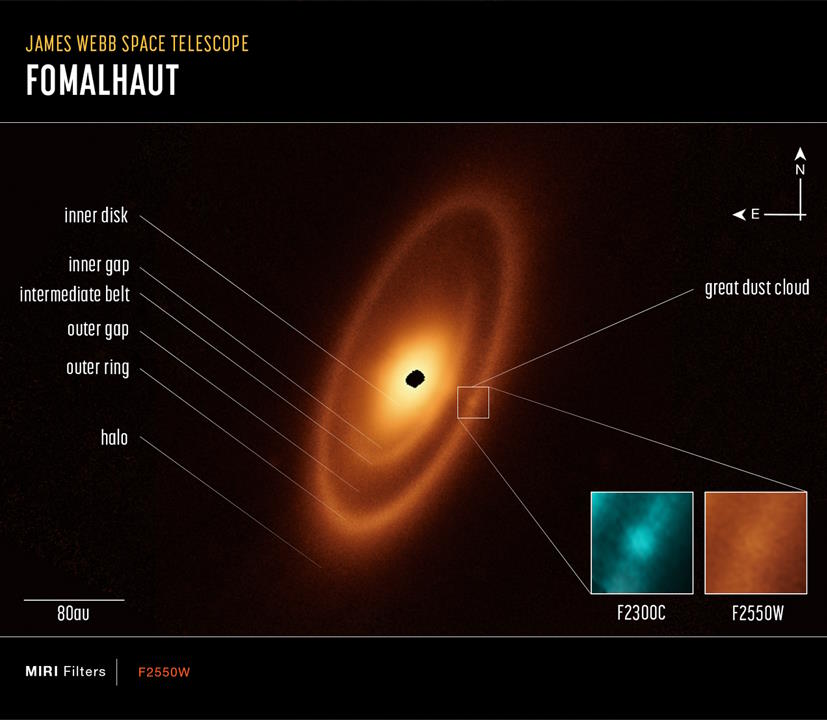
And that’s where the story gets really remarkable, and in many ways, unexpected.
Starting from the outside and working our way in, we found a few remarkable features. First off, the “old” Fomalhaut b planetary candidate is nowhere to be found; it’s like it’s dissipated entirely. This teaches us that, instead of a planet, it was likely a piece of collisional debris, like a cloud that results from two large icy bodies smashing together. This is probably the origin story for worlds like Pluto and Eris: massive bodies in our own Kuiper belt with its own system of satellites, and we could be seeing the aftermath of a Pluto-analogue in this data.
But what’s even more interesting is that it appears a new possible dust cloud is emerging. Could we be witnessing a very violent place in the Universe? Could this be a regular or even common occurrence: could the Kuiper belt analogues that we’re finding actually be hotbeds of collisions and dust-generating factories on their own? These observations don’t prove it, but they certainly are suggestive. Combined with the data from ALMA and Hubble, we can definitely conclude that there is a Kuiper belt analogue here, and it could be a source of extreme violence around young stellar systems.
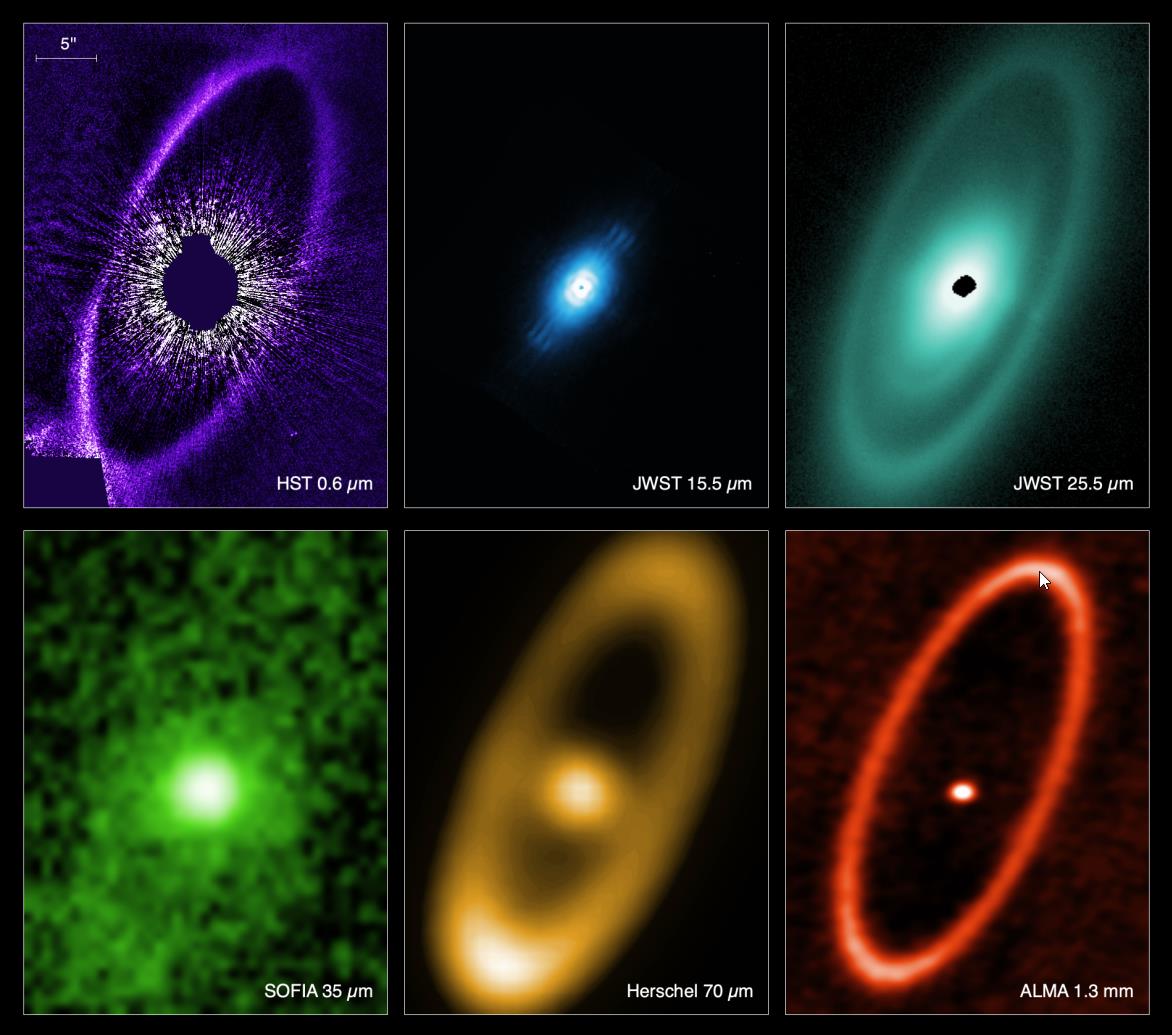
Moving inward, that “outer gap” is definitely real and significant. In fact, it’s even visually apparent in the JWST data at long wavelengths that didn’t even need a coronagraph! There is a ring of material that’s a Kuiper belt analogue, followed by what is almost certainly a planetary system — likely rich in massive, giant planets — with an innermore ring inside of it. JWST has removed the guesswork here and shown, for the Fomalhaut system (which itself is the brightest debris system as visible from Earth), that there definitely is a robust gap between the Kuiper belt analogue ring and the innermore, dust-rich material.
Moving inward even further, things get really interesting; JWST is now viewing this system in uncharted waters, where no other instrument has ever ventured before.
First, it finds that there isn’t just a ring interior to the gap, but that the ring is thin, with another gap interior to it. Astronomers are now calling this an intermediate ring, which is both wide (between 7 and 20 A.U., where 1 A.U. is the Earth-Sun distance) and large, with a semimajor axis of about 83 A.U. It’s about 2.5 times the orbit of Neptune in size, and around 10 times thicker than our own asteroid belt. In other words, this “ring” is probably indicative of a new type of belt, one in between what we’d consider an asteroid belt and a Kuiper belt.
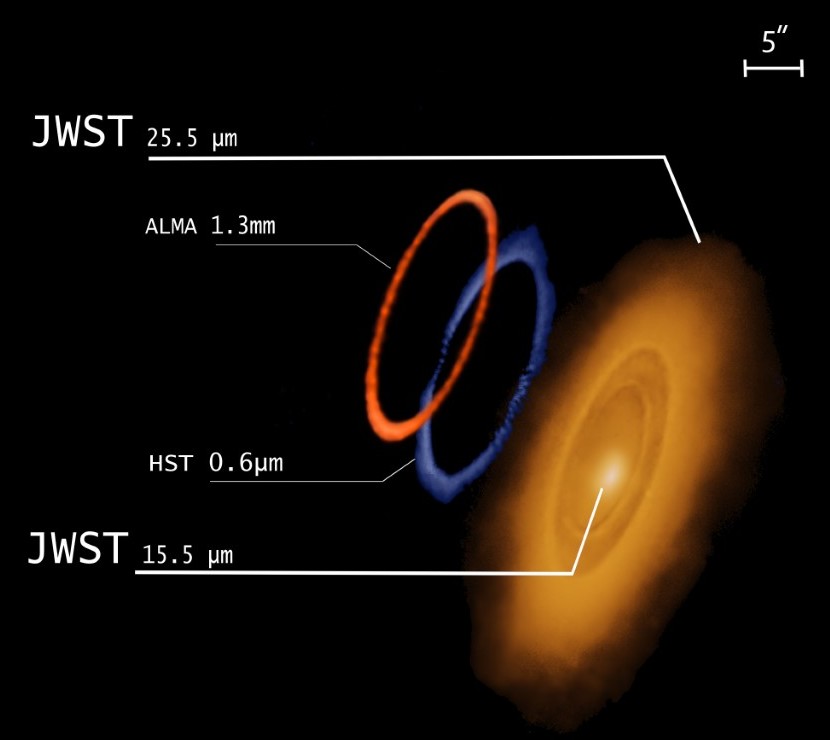
As we move interior to that intermediate belt, we find that there’s yet another gap: an “inner” gap, where the dust from the intermediate belt has been carved away. This doesn’t necessarily require a giant planet, however; something only a few times the mass of Neptune (and smaller than the mass of Saturn) would do it. There are almost certainly one or more planets in this intermediate region around Fomalhaut, and it raises the tantalizing possibility that either
- enhanced direct imaging, which we expect to achieve with either the 30-meter class telescopes (like ELT and GMT) on the ground or with NASA’s upcoming Habitable Worlds Observatory, could reveal one or more planets within this system,
- or that long-term radial velocity studies, which would be sensitive to high-mass, long-period planets,
can reveal precisely what the set of massive planets around Fomalhaut actually looks like.
But even interior to that gap, there’s something else that only JWST can reveal: an inner disk of dusty material that gets heated by the central star and that re-radiates that heat as infrared light. Only JWST’s mid-infrared wavelength coverage and large-diameter mirror (which enables spectacular resolution) has the capacity to reveal this feature, which must be at least ~10 A.U. in radius (about the size of Saturn’s orbit around the Sun) but which might be larger, dependent on the sizes of the dust grains present in this system.
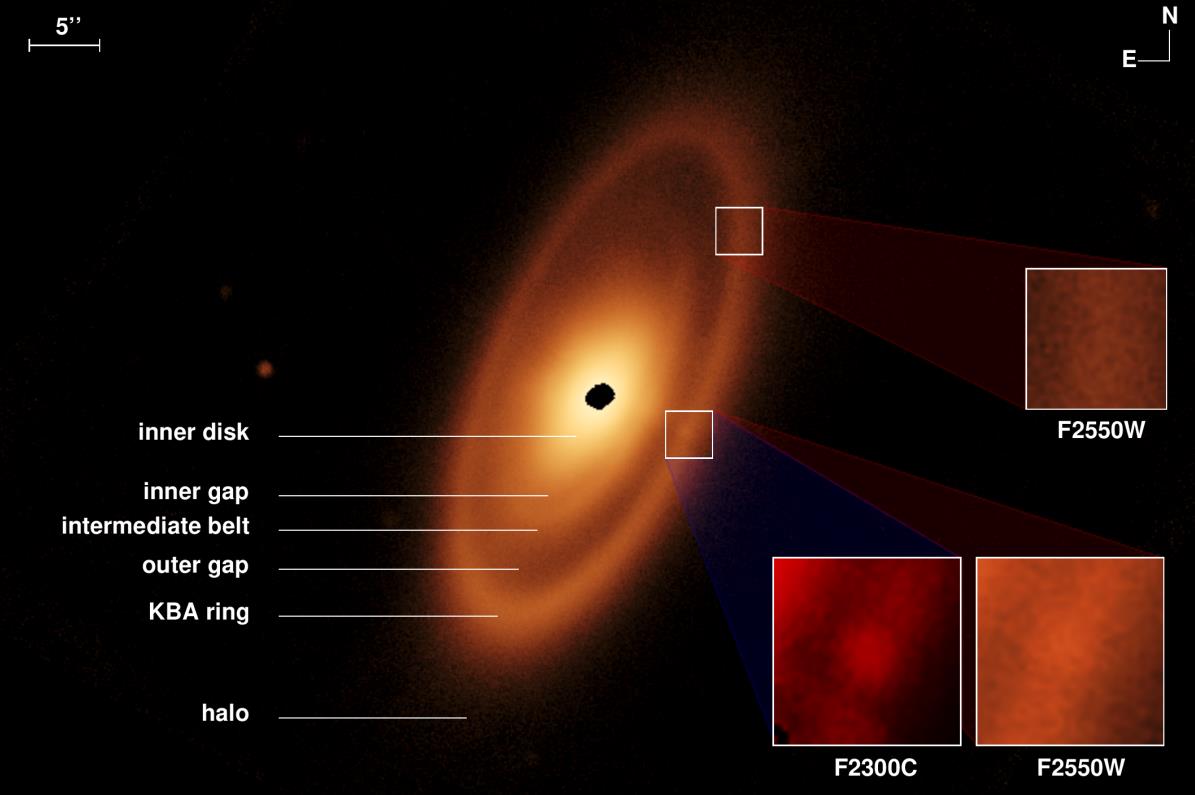
When the observations are combined from all sources about this system, a series of answers to our original questions arises, as do more follow-up questions that the novel data has led us to. The Fomalhaut system, viewed close-up and in great detail, shows us for the first time a planet-forming system whose history differs tremendously from our own Solar System. It has
- an extended inner disk that’s quite wide and that may be made primarily of quite large dust particles,
- a series of planets broken up by an intermediate ring/belt that’s incredibly dust rich,
- and a very violent Kuiper belt analogue, where dust-producing collisions are common.
What was originally thought to be a candidate planet in this Kuiper belt has been shown to be a dust cloud that is no longer visible, even to JWST’s impressive instruments, but now suggests that a new dust cloud may be forming.
It leads to a tremendous question: what does a “typical” architecture for a stellar system look like? Are systems like our Solar System common, uncommon, or outliers? Does the mass of the primary, central star have anything to do with the presence/absence of an intermediate belt, and how long do these dusty debris systems last for? And is Fomalhaut’s architecture more typical of planet-forming systems throughout the Universe? With a new generation of astronomical capabilities taking hold on the ground and in space, and with observations of the Vega and Epsilon Eridani systems sure to be forthcoming, we just might have a chance of finding out soon!
Author’s note: This article uses the term protoplanetary disk and debris disk interchangeably, but they are not the same. Protoplanetary disks refer to very young stars that still have planet-forming gas around them. Debris disks are older star systems that produce dust through the collision of solid bodies. Fomalhaut, like Vega and Epsilon Eridani, are debris disk systems, with no evidence for any protoplanetary gas remaining.
